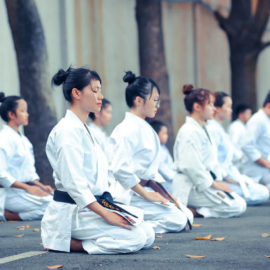

This article is an excerpt from the Shortform book guide to "Come As You Are" by Emily Nagoski. Shortform has the world's best summaries and analyses of books you should be reading.
Like this article? Sign up for a free trial here .
What is the connection between sex and emotional attachment? How does attachment style influence sexuality?
Depending on how our caregivers raised us as children, we develop different styles of attachment. According to sex researcher Emily Nagoski, your attachment style not only dictates your behavior in romantic relationships but also affects your sexual experience.
Here is how people with different attachment styles approach sexuality.
Parenting and Attachment Styles
If our primary caregiver was a reliable source of love and safety, we will likely develop a secure attachment style. On the other hand, if our caregiver wasn’t dependable, we will likely develop an insecure (anxious or avoidant) attachment style.
(Shortform note: The parenting style of our caregivers isn’t the only factor contributing to our attachment style. The authors of the book Attached identify several other conditions that affect attachment style, including the temperament we were born with, the stress levels of our parents, and how often we spent time with caregivers other than our parents. Additionally, they recognize the impact of our adult romantic experiences, which can cause our attachment style to shift over time. For example, if your partner has an affair, you may shift to a more anxious attachment style due to feelings of betrayal and inadequacy.)
Attachment Styles and Our Sexual Experience
What is the connection between sex and emotional attachment?
Your attachment style has an effect on your sexual behavior. Here is how people with secure, anxious, and avoidant attachment tend to approach sex:
- Secure attachment: People who develop secure attachment are most likely to have healthy sexual wellbeing, having more frequent and enjoyable sex.
- Anxious attachment: Those who develop anxious attachment tend to use sex to become more attached to their partner (especially in the case of women). They also experience more pain and anxiety around sex.
- Avoidant attachment: Individuals who develop this type of attachment start having sex later in life and less often overall. They also feel less of a connection between sex and relationships and tend to engage in more one-night stands and casual relationships.
Attachment Style Characteristics
Although Nagoski identifies the three types of attachment styles, she doesn’t discuss the general characteristics of each type and how they lead to a specific kind of sexual behavior (as described above).
According to the book Attached, individuals with a secure attachment style are loving partners who are comfortable with intimacy. They communicate their needs and also anticipate the needs of their partner easily. These characteristics naturally lead to healthier and more enjoyable sex because being open to vulnerability and having a close relationship with your partner make it easier to experience pleasure during sex.
On the other hand, those with an anxious attachment style suffer from low self-esteem and constantly worry about the state of their relationship, ultimately expending an enormous amount of emotional energy trying to manage it. Because of this, they tend to use anything they can to become more attached to their partner—including sex. Furthermore, because they experience so much fear toward their relationship, sex can turn into something emotionally painful rather than enjoyable.
Finally, people with an avoidant attachment style are emotionally distant and threatened by intimacy. They don’t like to talk about their feelings and have a strong preference for autonomy, often worrying that their partner is interfering too much in their life. It’s this inclination toward independence and avoidance of emotional vulnerability that ultimately leads to less frequent and more casual sex, as they don’t see it as a means of connection.
| Love vs. Attachment: Is There a Difference? Nagoski defines love as the process of attachment. However, culturally, we tend to view love and attachment as distinct concepts, with attachment having more to do with possession and control than care and affection. So what does the research have to say about love and attachment? In contrast to our tendency to separate the two, the attachment-theoretical framework considers the feeling of attachment to be a fundamental part of secure love, along with two other components: a desire for caregiving and sexual attraction. Although there are three components of secure love, the framework maintains that attachment is the most important, as it influences both our capacity for caregiving and disposition to feel sexual attraction. |

———End of Preview———
Like what you just read? Read the rest of the world's best book summary and analysis of Emily Nagoski's "Come As You Are" at Shortform .
Here's what you'll find in our full Come As You Are summary :
- Why women should change the way they talk, think, and feel about their sexuality
- A look at the misinformation and harmful cultural messaging surrounding sex
- A discussion around the individual experiences of arousal, desire, and orgasm






